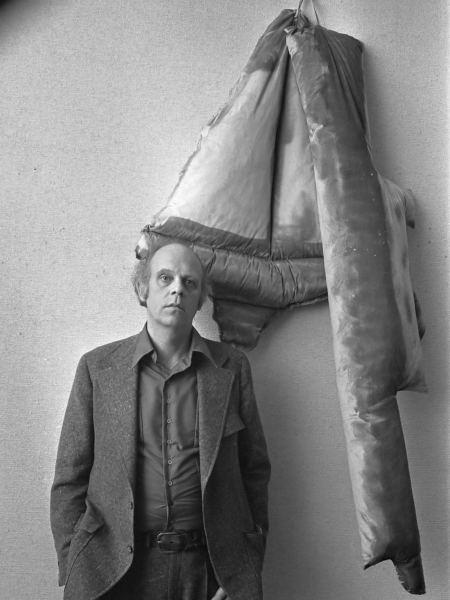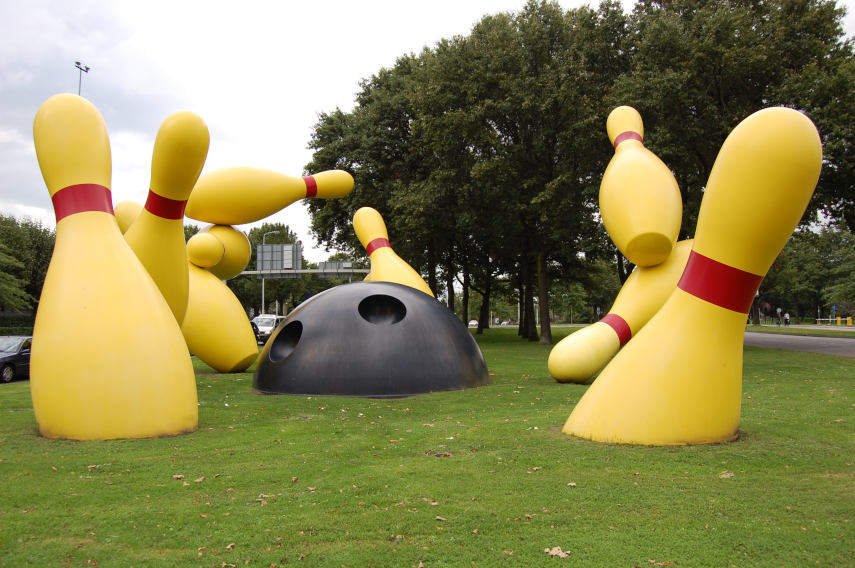Revisiting Claes Oldenburg's The Store - The Slippery Line Between Art and Commodity
“My intention is to make an everyday object that eludes definition,” said Claes Oldenburg commenting about his practice. The Swedish-born American artist, who passed away in 2022 at the age of 93, is best known for his monumental sculptures of ordinary objects like different household appliances and food.
Instead of depicting people, he focused on the items we use in everyday life that relate to our needs and desires. “I’ve expressed myself consistently in objects with reference to human beings rather than through human beings,” he explained.
In 1961, Oldenburg created an installation that would become a milestone of Pop art, The Store, an expression of the artist's interest in the commodity culture and art, and the permeable border that divides the two.

Claes Oldenburg's The Store
A Pop art installation that blurred the lines between an art gallery and a workshop, Oldenburg's Store opened in the winter of 1961 in the Lower East Side of Manhattan. The storefront was filled with the collection of undergarments that hung on the walls, pies and cakes displayed in cases, meat cuts and burgers, and deformed coffee cups and cans of soda. A cash register resembling a crumbled Jackson Pollock painting was put in the centre of the display.
The objects were made of cloth soaked in plaster and were painted with colours applied with broad brushstrokes. The objects were never intended to pass as real things, and their clumsy execution further emphasized their artificiality.
Claes Oldenburg's The Store was not a fancy place of exclusive or luxurious products but a copy of an American store that sells cheap food and various items of questionable quality. It showcased recognizable desserts such as candied apples and ice cream with a price tag ending with 99 cents, as well as other everyday items usually found in these places.
The opening of The Store was followed by a letterpress textual print, conceived as a work of art in its own right. It featured red and black printed capital letters in various fonts and was made to advertise The Store installation while also being a part of it.
In bringing multiple media together in one installation, Oldenburg created a total work of art that responded to the ephemerality of the material world. The totality of his art was also noted by historian Martin Friedman, who wrote in the catalogue for the exhibition Oldenburg: Six Themes:
Oldenburg’s art is a totality. The themes, each manifested in different media, are intimately related. Detailed drawings of objects, hastily scrawled notes, fragments of poetry, cardboard models, muslin and vinyl soft sculptures, and the recent large industrially fabricated steel pieces are elements of a total view.

The Significance of The Store
Located at 107 East 2nd Street, The Store was one of the most important works that set the scene for emerging Pop art. The artist produced each piece of the installation in the back of the space he rented and sold them to customers in the front room for prices ranging from $21.79 to $899.95.
The Store opened in the area of Manhattan known for its dime stores selling cheap and second-hand goods, and it was conceived as a duplicate of these shops with its offerings.
Oldenburg's message in creating The Store was clear — the line between art and general trade, such as the trade-in thrift-store trinkets, was artificial; both relied on commodities, and art could not escape its commodity status.
These things [art objects] are displayed in galleries, but that is not the place for them. A store would be better (Store-place full of objects). Museum in b[ourgeois] concept equals store in mine.
The status of the work of art as a commodity rested on its exchangeability, and Oldenburg exploited this idea by presenting the institution of art as a marketplace where any object could be the equivalent of another. In it, the chain of associations ran wild, and Oldenburg collected some of them in Store Days, a book that assembled all the artist's notes relevant to the installation.
He wrote: "cock and balls equals tie and collar/equals leg and bra/equals stars and stripes/flag equals cigarette package and cigarettes/heart equals balls and triangle/equals (upside down) girdle and stockings/equals (sidewise) cigarette package equals flag."
In bringing attention to the commercial ordering of the art world, Oldenburg paved the way for further explorations of American society through Pop art, which both elevated and criticized its exaggerated consumption.

A Pop Art Outlier
Although Claes Oldenburg is considered one of the founders of Pop art, he was nonetheless so individualistic that is regarded as the movement's outlier at the same time.
Born in Stockholm in 1929, Claes Thure Oldenburg was the son of Gosta and Sigrid Elisabeth (Lindforss) Oldenburg. His father was a diplomat, so Oldenburg grew up in Chicago. He studied literature and art history at Yale University and later moved back to the Midwest to study at the Art Institute of Chicago.
His works, large is scale and size, expanded the definition of sculpture and inspired contemporary artists such as Jeff Koons and Rachel Harrison. Turning sculpture soft, he brought humour and playfulness to art and transformed humble objects into sociological statements, according to art dealer Arne Glimcher.
Talking about his fascination with objects, which differs from other Pop artists, Oldenburg emphasized an almost religious emotion that permeated them. "A catalog could be made of all such objects, which would read like a list of the deities or things on which our contemporary mythological thinking has been projected. We do invest religious emotion in our objects."
Claes Oldenburg's The Store represents an early example of his approach to the mundane, besides The Street (1960) an installation of cardboard cutouts. It mimicked the fiction of the gallery and emphasized the capitalist influence on art, criticizing at the same time Abstract Expressionism.
It also created a new context for art that expanded its grasp and put in focus aspects of modernity that defined everyday human existence in the second half of the 20th century.
Featured image: Oldenburg in The Store, 107 East Second Street, New York, 1961. Photo: Robert R. McElroy, via wikiart.org
Can We Help?
Have a question or a technical issue? Want to learn more about our services to art dealers? Let us know and you'll hear from us within the next 24 hours.
